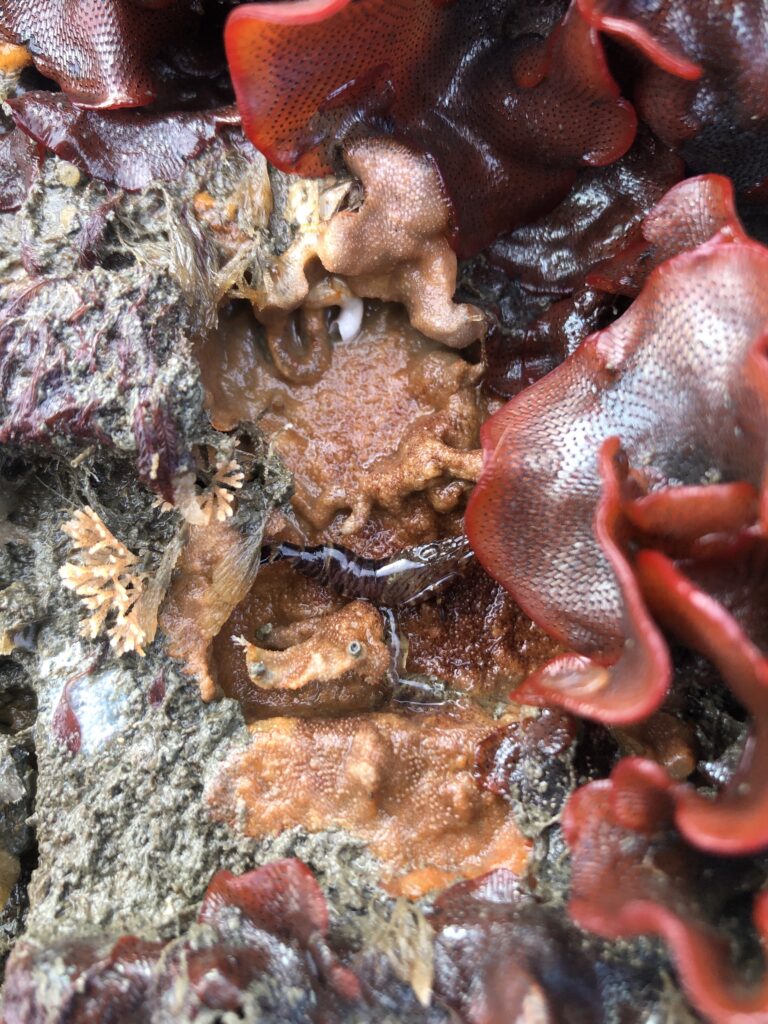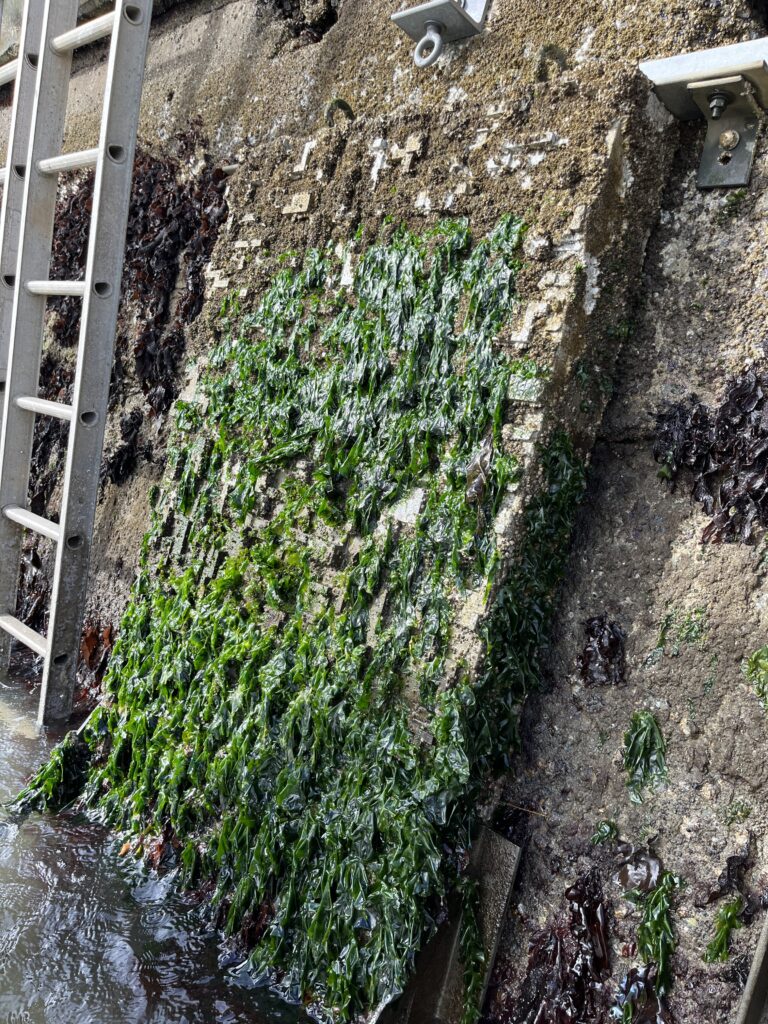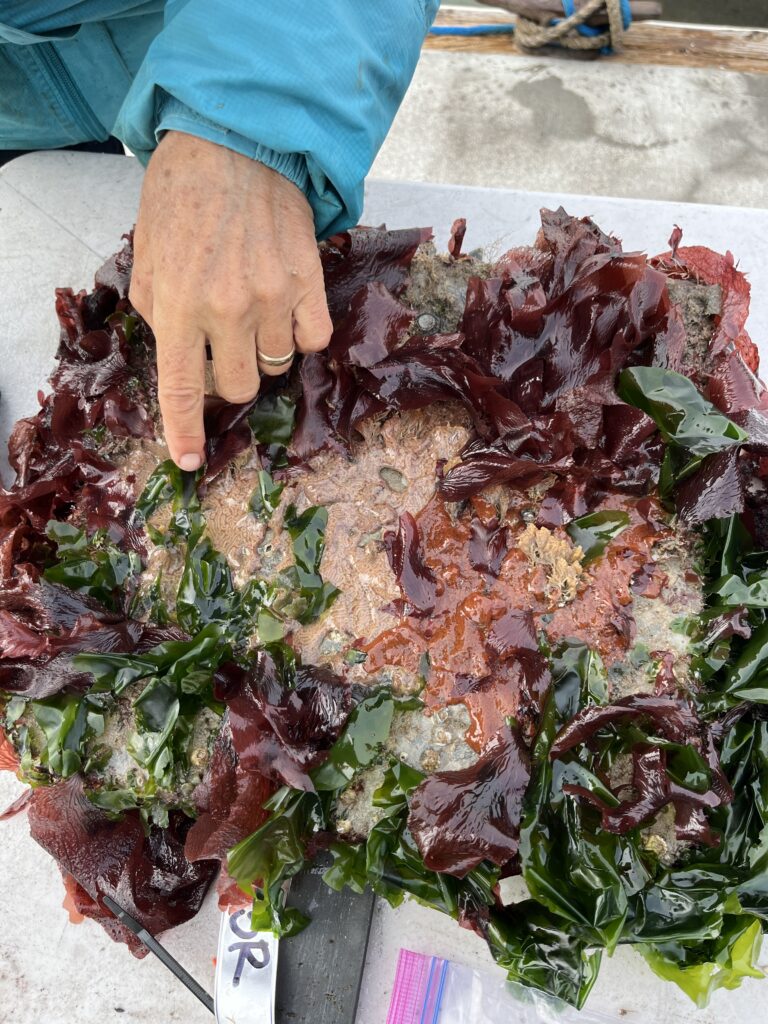by Sara Aoki
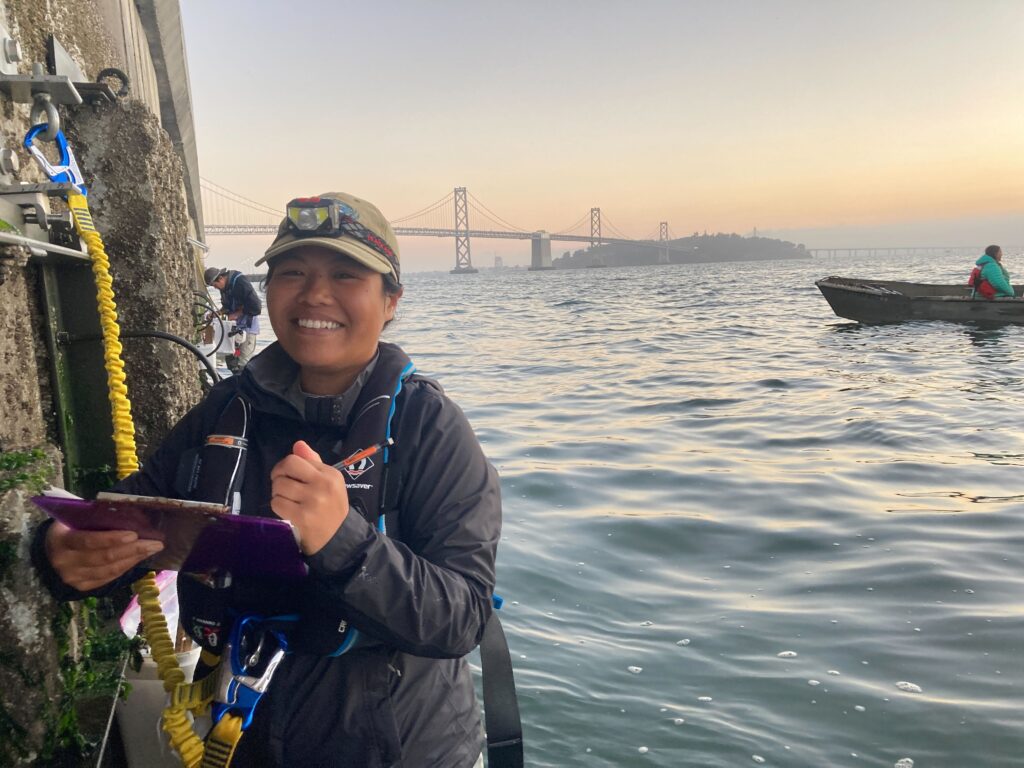
Over one hundred years ago, San Francisco built its first seawall: a 3-mile, concrete wall that protects the city’s shores from sea level rise and erosion.
Just over a year ago, in autumn 2022, the Smithsonian Environmental Research Center (SERC) and the Port of San Francisco set out to change history with a new experiment, titled the Living Seawall Pilot Project. It’s part of a larger effort to renovate the seawall.
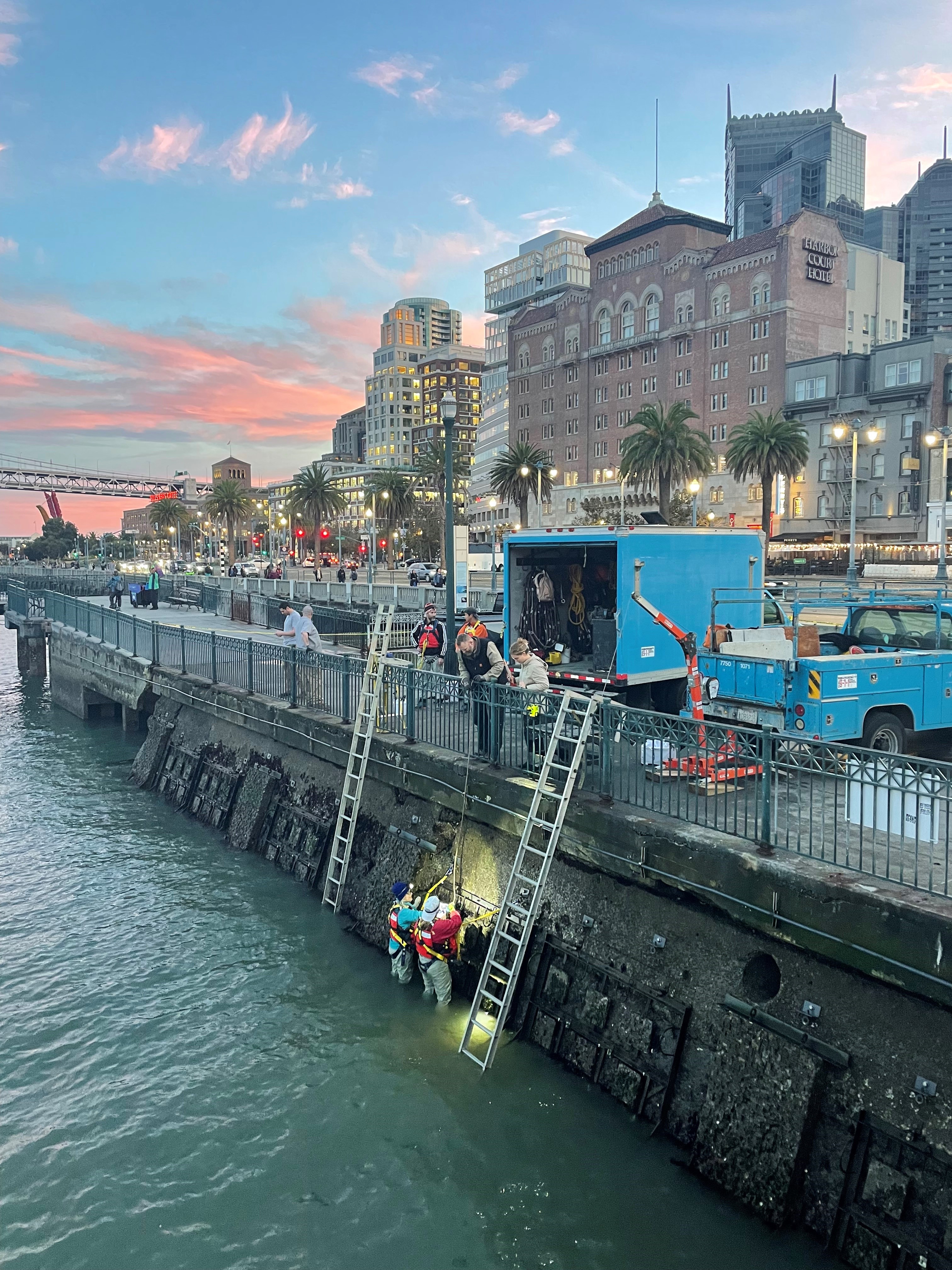
The city’s original seawall was built as a smooth concrete wall. However, many of San Francisco Bay’s underwater species struggled to establish themselves along this unfamiliar, flat surface. In an effort to make the wall more welcoming to native species, Smithsonian researchers are experimenting with a new type of material for the seawall. Using special tiles textured with pits and grooves, they’re attempting to mimic the rocky shoreline of the natural Bay environment.
Looking back, this past year has been filled with unexpected challenges and experimentation. From initial study design to data collection, the team had to adapt and think creatively to bring this project to life.
First, they had to grapple with installing the tiles on the seawall. With some tiles as large as 6 feet tall and 3 feet across, putting them in place was no simple task. This process was made even more difficult by the locations selected, notorious for their frequent tidal changes. When designing steel frames for researchers to balance on during data collection, Port staff were faced with many unknowns. The project design was unprecedented, and researchers would be racing the tidal clock.
“This is a unique project that is different from what we typically do, and the tiles required us to think creatively about installation,” said Drew McEwing, a diver with the Port of San Francisco. “We had to make adjustments throughout the process that were necessary for safety and optimal research conditions, like reinforcing the tiles to protect them from storm damage at the beginning of 2023.”
During one storm, intense wave activity damaged and dislodged the steel frames. In response, divers and researchers installed additional safety measures and changed their data collection protocol.
“The storms were a learning opportunity,” said Jessika De Jesus, a SERC research technician. “Mother Nature does not care about the research process. We have to be prepared for anything… Now we know what we would do differently with seawall’s design in the future.”
By the next data collection in July 2023, the team had resolved many challenges from the beginning of the year, and the researchers were able to complete their first full data collection event. When they visited the tiles, the growth was impressive. Now, they could finally see what species were growing on the tiles.
Field work began to feel like a pseudo-classroom. The team would excitedly flock to the tiles, fascinated by a mystery species or unexpected creature. During one field day, ecologist Andy Chang taught everyone how to identify Licornia diegensis, bryozoan native to the Bay.
In addition to the expected rainbow of algae, the team saw carnivorous snails, hermit crabs, and even shrimp living in the pits and grooves on the new textured tiles. So far, the textured tiles seemed to support more native species than the smooth tiles.
“We learn something new every single time we go out,” said SERC ecologist Chela Zabin.
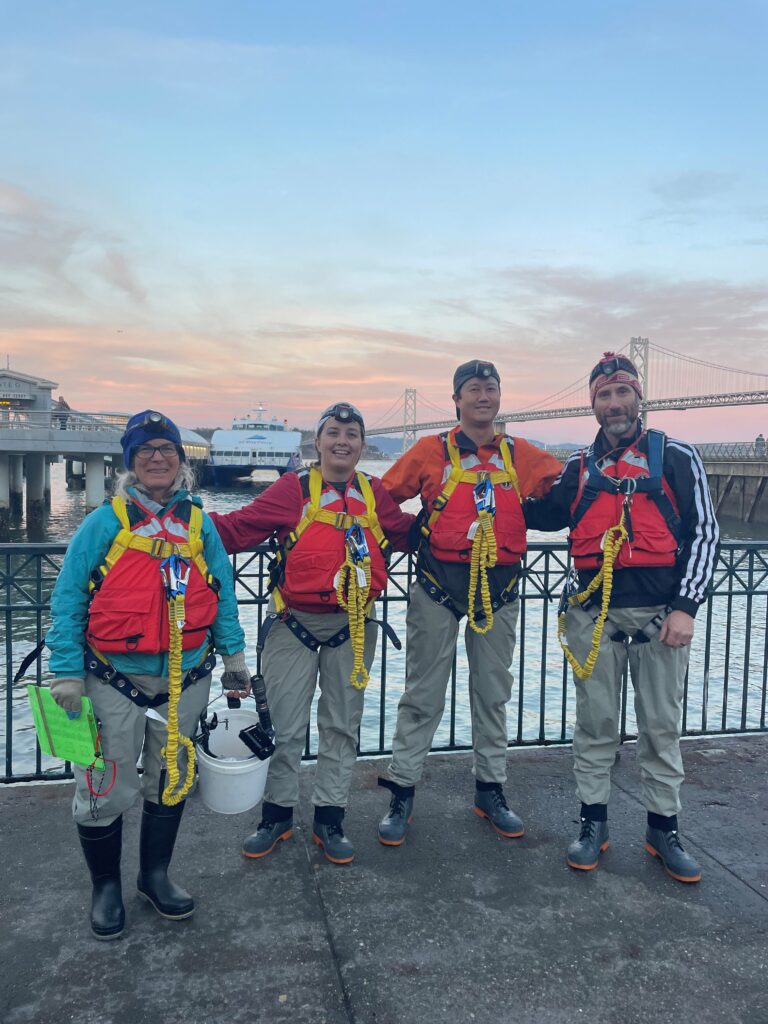
As the myriad life forms on the tiles continues to grow, some team members are thinking about the next big questions.
“It would be great to expand our data collection to more than just biodiversity data, to look at things such as ecosystem function,” said Corryn Knapp, a graduate student working with the SERC research team. While the project currently focuses strictly on biodiversity, who represents just one piece of the puzzle. Getting a fuller picture of life on the tiles, Knapp explained, would entail “looking at not just who, but also what is going on, and how it is happening.”
For more information on the Living Seawall Pilot Project or to learn more about the next year of data collection, visit https://sfport.com/wrp/living-seawall or check out the Living Seawall in person at the Agricultural Building along San Francisco’s Embarcadero.
Read more: Creating a “Living Seawall” in San Francisco Bay

